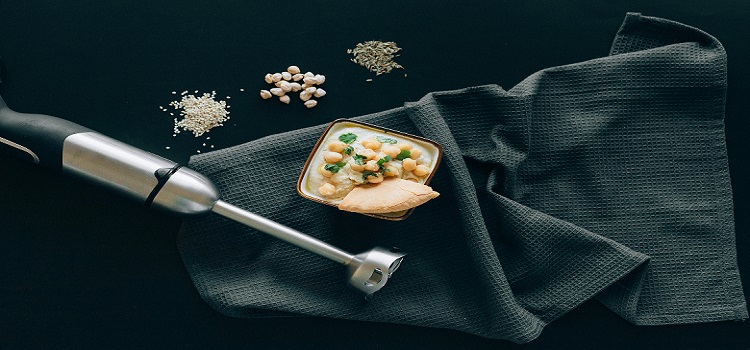As an Amazon Associate I earn from qualifying purchases.
Master the Art of Blender Pesto Sauce
Making pesto sauce at home is a game-changer, especially when using a blender. This modern twist on a classic Italian recipe delivers a velvety, aromatic sauce perfect for pasta, spreads, and marinades. Ready to whip up a batch? Let’s dive into the details.

Ingredients: What You’ll Need
Here’s a breakdown of the fresh and flavorful components required for this vibrant pesto sauce:
| Item | Quantity | Extra Tips |
| Fresh basil leaves | 2 cups | Go for organic if available. |
| Garlic cloves | 2-3 cloves | Milder flavor? Use roasted garlic. |
| Pine nuts | 1/4 cup | Substitute with cashews or almonds. |
| Parmesan cheese | 1/2 cup | Pecorino Romano is a great option. |
| Olive oil | 1/2 cup | Use cold-pressed for richness. |
| Lemon juice | 1 tablespoon | Adds brightness to the flavor. |
| Salt and pepper | To taste | Season to preference. |
Crafting Pesto Sauce in a Blender
Creating this rich, emerald-green sauce is surprisingly straightforward.
1. Prepare Your Ingredients
- Rinse and dry the basil leaves to ensure no excess moisture.
- Lightly toast the pine nuts in a pan to enhance their flavor (optional).
2. Layer in the Blender
- Add basil, garlic, pine nuts, and Parmesan cheese to the blender.
- Pour in half the olive oil to start blending smoothly.
3. Blend to Perfection
- Pulse the blender until ingredients form a coarse paste.
- Gradually add the remaining olive oil while blending until the sauce reaches your desired consistency.
4. Season and Adjust
- Mix in lemon juice, salt, and pepper. Taste and tweak flavors as needed.
5. Store or Serve
- Transfer the pesto to an airtight jar if not using immediately. Store in the fridge for up to a week.
Creative Uses for Pesto Sauce
Pesto isn’t just for pasta! Explore these ideas:
- Drizzle over Caprese Salad: A delightful twist on a classic.
- Spread on Sandwiches: Swap mayo for a flavorful kick.
- Marinate Proteins: Perfect for chicken, fish, or tofu.
- Pizza Sauce Alternative: Spread pesto on your next homemade pizza.
Nutritional Overview
| Nutrient | Amount Per Serving |
| Calories | 230 |
| Protein | 5g |
| Fat | 22g |
| Carbohydrates | 3g |
| Fiber | 1g |
| Sodium | 120mg |
Expert Tips for Pesto Success
- Avoid Over-Blending
- Pulse gently to keep the sauce from overheating, which can affect flavor.
- Experiment with Greens
- Substitute basil with spinach, kale, or arugula for a unique twist.
- Preserve the Bright Color
- A quick blanch of basil leaves in boiling water can lock in their vibrant green hue.
- Freezer-Friendly
- Pour leftover pesto into ice cube trays for easy portioning.
- Customize the Flavor
- Add chili flakes or sun-dried tomatoes for extra zing.
FAQs About Blender Pesto
- Can I use a food processor instead of a blender?
Yes, both tools work well, but a blender gives a smoother consistency. - Do I have to toast the nuts?
Toasting is optional but adds depth to the flavor. - What if I don’t have Parmesan cheese?
Pecorino Romano or nutritional yeast are excellent substitutes. - How do I fix a too-thick pesto?
Add a tablespoon of water or more olive oil to adjust consistency. - Can I make pesto without nuts?
Yes! Simply skip the nuts or replace them with seeds like sunflower or pumpkin. - What’s the shelf life of homemade pesto?
It lasts about a week in the refrigerator. - Can I freeze pesto?
Absolutely! Freeze in small portions for up to 3 months. - Why does my pesto taste bitter?
Over-blending or low-quality olive oil may cause bitterness. - What dishes pair well with pesto?
Pasta, roasted veggies, and grilled meats are fantastic options. - Can I make vegan pesto?
Replace Parmesan with nutritional yeast or a vegan cheese alternative.
Pesto sauce is a versatile staple that’s easy to prepare, and using a blender simplifies the process even more. This recipe is perfect for busy weeknights or elevating your weekend meals. Dive in, experiment, and enjoy the vibrant flavors of homemade pesto!
As an Amazon Associate I earn from qualifying purchases.
Leave a Reply